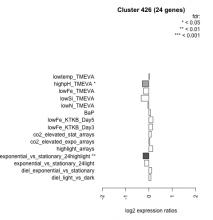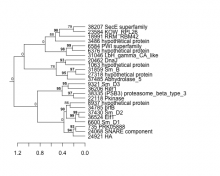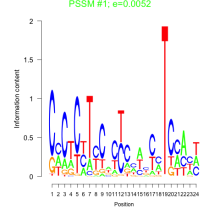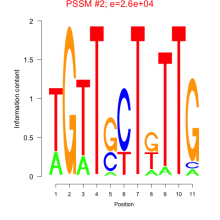38335 (PSB3) proteasome_beta_type_3Thalassiosira pseudonana
| Chromosome | Product | Transcript Start | End | Strand | Short Name | |
|---|---|---|---|---|---|---|
| 38335 | chr_19b_31 | (PSB3) proteasome_beta_type_3 | 44433 | 45048 | + | proteasome_beta_type_3 |
| NCBI ID | Ensembl Genomes exon ID |
|---|---|
| 7444385 | Thaps38335.1 |
| Expression Profile | Conditional Changes | Cluster Dendrogram | Discovered Potential cis-Regulatory Motifs |
|---|---|---|---|
Thaps_hclust_0426 |
 |
 |
   |
| Normalized Mean Residue | Discovered Potential cis-Regulatory Motifs | |
|---|---|---|
|
Thaps_bicluster_0004 |
0.42 |
 0.0052  26000 |
| T. pseudonana | P. tricornutum | P. tricornutum DiatomCyc | F. cylindrus | Pseudo-nitzschia multiseries | E. huxleyi | C. reinhardtii | A. thaliana | P. sojae |
|---|---|---|---|---|---|---|---|---|
| Not available | PHATRDRAFT_30003 | PHATRDRAFT_30003 | 273592 | 185537 | 459379 | Cre06.g267500.t1.2 | AT1G21720.1 | 288866 |

Add comment